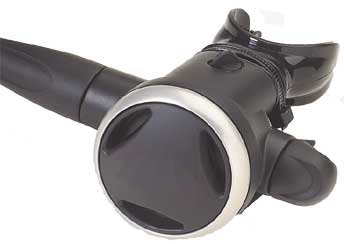Regulators - Second Stages

There are a variety of choices you can make here, mainly concerning adjustability. High-end second stages come with one, two, or even three adjustments. Some are actually useful, others are pure marketing nonsense. With thick gloves on, you may not even be able to work them in the water. All user-accessible adjustments have a much narrower range of operation than the internal adjustments that a technician can make. My experience is that if a reg is malfunctioning, the user adjustments will be useless to stop it. On the other hand, if you're a gadget person who likes to fiddle with things, some of the adjustments actually can make a noticeable ( although not essential ) difference in breathing. On the theory that extra moving parts are extra failure points, I would avoid adjustable regulators, but that's not really possible anymore. With most manufacturers, the non-adjustable regs are the bottom of the line, and you don't want that, so buy a good reg, and if it has a few useless bells and whistles, live with them.
Something that I think is more important than silly adjustments is field maintainability. If you drag a second stage in the sand ( like most octopuses have done to them ) there is a very good chance you will have problems with it. If your second stage can be disassembled outside of a dive shop, you can probably get it working again back in the boat, and not lose your second dive. Usually, all you have to do is pop off or unscrew the cover, pull out the diaphragm, and rinse the body out with water. Some regulators require special tools and training to do even this. Before you buy, see if you can get it apart easily in the shop, or ask the salesman to show you how. ( Yes, I know you're not supposed to try to repair a regulator yourself, but the truth is we all do it when we have to. )

Don't let the mouthpiece sway your choice of regulator. There are lots of different designs on the market, some good, some bad, and it is trivial to install almost any mouthpiece on almost any reg. Buying a reg for the mouthpiece is like buying a car for the tires, yet almost every manufacturer makes a big issue out of it in their sales pitch. I like the patented "Comfo-Bite" mouthpiece from Aqualung ( right ) so much that I picked up some extras and stretched them onto all my other regs.

